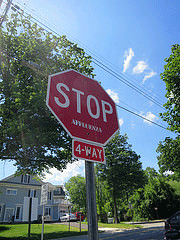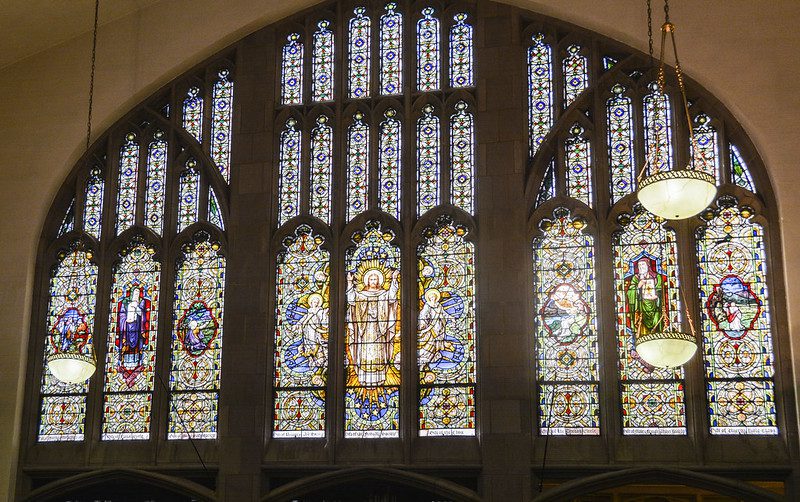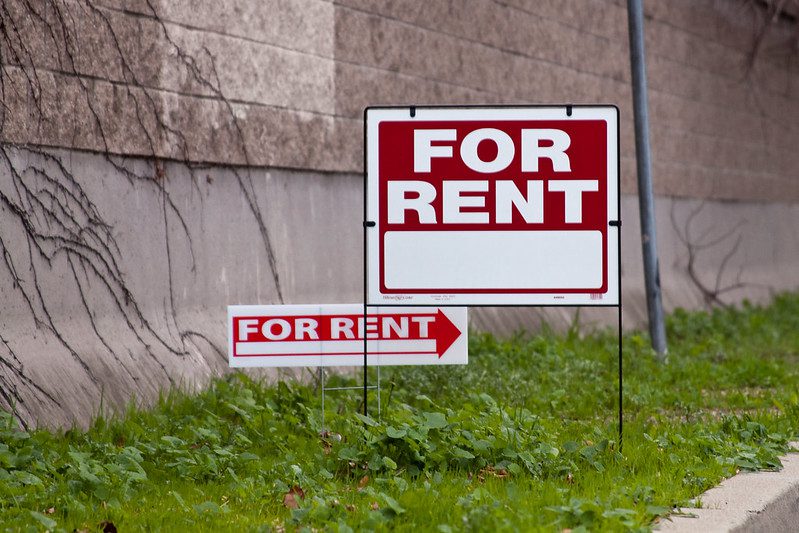
We’ll soon find out as a 40-year experiment in San Francisco’s Tenderloin neighborhood is about to be put to the test.
The Tenderloin has long been a concentrated area of acute poverty and social distress in the middle of one of the world’s most affluent cities. The streets of the Tenderloin are alive with drugs and crime. Much of the area’s population lives in inexpensive Single Room Occupancy (SRO) Hotels.
But after decades of neglect, investment is suddenly flooding into the neighborhood. First, Internet firms like Twitter and Zendesk moved into offices on the edge of the Tenderloin and now a wave of new housing and commercial development is working its way through the city’s planning process.
[RELATED ARTICLE: What Does ‘Gentrification’ Really Mean?]
It is a story that must sound familiar to anyone working to improve any other urban neighborhood in America: decades of disinvestment and neglect replaced almost overnight by speculation and runaway market pressure. But the story of the Tenderloin is taking a turn that is entirely unlike every other American neighborhood.
When disinvested neighborhoods finally start to get significant market activity, we have become accustomed to seeing neighborhood leaders turn and begin focusing their efforts on preventing displacement.
But that is not what is happening in the Tenderloin. . .
There have been no anti-displacement marches in the famously well-organized Tenderloin. There have been no sit-ins at city hall designed to block these new developments.
Part of the explanation for this unexpected calm is a surprisingly widespread feeling that the Tenderloin is, as the City’s Housing Director, recently described it, “immune” from market pressure. Could the Tenderloin be the rare place where new market rate housing development can happen without triggering widespread displacement of lower income residents?
This possible immunity didn’t just happen. Starting in the 1970s and continuing uninterrupted over the decades since, Tenderloin activists, working with city government and a set of strong nonprofit partners, bought or otherwise obtained control over a significant share of the area’s real estate.
If the neighborhood is immune to gentrification, the vaccine is permanently affordable housing. Long time Tenderloin activist Randy Shaw explains that “more than 25 percent of the neighborhood’s housing stock is either in nonprofit hands or has rents subsidized by the government. It’s hard to gentrify a neighborhood when a major portion of its land isn’t available to speculators.”
So, even if the neighborhood is overrun by luxury housing and upscale restaurants, the residents of these affordable units will not be displaced.
However, just like a vaccine where a small treatment provides system-wide immunity, the presence of permanently affordable housing units at this scale may be enough to permanently constrain the character of any market rate housing in the area. You can only go so far upscale in this context.
Because housing for very low income residents is a permanent feature of the neighborhood, a certain level of tolerance of economic diversity is a necessary characteristic for any new residents – not just during a transition period, but permanently.
It is, of course, far too soon to know whether the level of permanently affordable housing in the Tenderloin is enough to provide ‘immunity’ that will extend to protect residents of the remaining SRO housing stock – much of which is still privately owned. There could still be significant displacement in the Tenderloin, but it seems fairly clear that the neighborhood itself won’t be flipped in the way of so many other neighborhoods.
Recently the City published a new strategy for revitalization of the Tenderloin. It calls for low-income residents, social service agencies and tech companies to work together to make the neighborhood cleaner and safer and to attract new investment. The plan calls for prioritizing investments that “provide resources to take care of low income people” and are compatible with a truly mixed-income community.
It’s a “win-win” strategy that could be dismissed as wishful thinking in any other contested neighborhood. But in the Tenderloin, community control of land makes it possible for community leaders to risk improving the neighborhood without worrying that new investment will push out all the low income people. And this sense of security makes it possible that everyone could, for once, row in the same direction toward a safer and cleaner neighborhood.
Those strategies may or may not ultimately succeed in the Tenderloin (it is a very tough environment) but, that such a collaborative strategy is even being seriously pursued is a major achievement made possible only through decades of steady investment in permanently affordable housing.
And while it is a truism that the best time to start buying real estate is 40 years ago, it is not too late for many communities to follow the Tenderloin’s example and invest in lasting affordability. In fact, this strategy of steady land acquisition and permanent affordability controls is probably the only approach to combating gentrification that can actually win.
(Photo credit: ‘Stop Affluenza,’ by Daniel Lobo, via Flickr)






While it is certainly true that removing housing from the market through social ownership will protect residents of these buildings from displacement, it doesn’t follow that gentrification won’t inexorably displace unprotected low income tenants in the neighborhood. In Boston’s South End, the Mass Alliance of HUD Tenants has successfully saved more than 2,300 units (in a neighborhood housing 31,000 people) of “expiring use” housing that would have been lost but for tenant organizing over the past 30 years, including several hundred in resident owned or controlled nonprofit housing (Castle Square, The Brownstones, South End Housing Coop, Warren Avenue, East Canton Street). When added to previously organized nonprofit or public housing, more than 38% of the neighborhood’s housing stock is socially owned and permanently affordable—apparently a higher percentage than the Tenderloin. But virtually all the unprotected privately owned stock has been converted to luxury housing. The City and BRA are now promoting “super luxury” new construction on underdeveloped land, driving up private rents to astronomical levels. The article seems to imply that the mere presence of low income people will moderate private rents and speculation; the South End experience suggests otherwise.
Strong piece.
After community control of land, I would add the city’s 1980 Residential Hotel Demolition and Conversion Ordinance to the list of fortifications. As others here know better than I, it gave providers some breathing room by banning demolition or conversion of SROs unless a significant affordable housing replacement fee was paid, and has been credited with dramatically reducing the loss of residential hotel units post adoption.
This will be interesting to watch as redevelopment occurs. 10-20 years out will be very telling.
Rick – thanks so much for this piece. As we try to think through neighborhood revitalization in Baltimore post-civil unrest, long term affordability covenants on publicly owned property will be critical to preserving housing opportunities for low income residents while seeking to attract private investment in communities most effected by unrest. But we will also need private actors to maintain rents at levels that are affordable; do you know if the city is offering incentives to private owners of affordable housing to maintain that housing as affordable long term?
Citing Randy Shaw, executive director of the Tenderloin Housing Clinic, Rick Jacobus writes that “more than 25 percent of the neighborhood’s housing stock is either in nonprofit hands or has rents subsidized by the government.”
Jacobus goes on to say that “it’s far too soon to know whether the level of permanently affordable housing in the Tenderloin is enough to provide ‘immunity’ that will extend to protect residents of the remaining SRO housing stock – much of which is still privately owned.”
Nonprofits are private, not public, entities.
So is all of the Tenderloin’s housing stock privately owned?
If the low income housing is improved, and more upscale housing is introduced, will the neighborhood actually improve or will drugs and crime overcome the new neighborhood? Something to think about as money floods into improving the neighborhood in years to come.
I go back and forth on this one. I think from the perspective of a neighborhood in a city like SF, and even in certain neighborhoods in Oakland, where the financial speculative pressure is so insanely high, a high level of concentration of permanenty affordable housing may act as an appropriate and necessary bulwark to gentrification. But the rest of the region (especially more suburban communities like el cerrito, albany, orinda, walnut creek, san leandro, hayward, and most of the peninsula) needs to help take the pressure off of these urban areas. I think a more even regional distribution of permanently affordable and denser middle class housing combined with better public transit infrastructure will lead to better outcomes for a wider range of neighborhoods across the Bay Area, will reduce some of the concentrated poverty we find in tougher neighborhoods, and will still allow for places to keep a culture or sense of place relatively intact.
Thanks for all the thoughtful comments.
Michael, I appreciate the suggestion to look at South Boston. I absolutely admit that there is no evidence yet that significant levels of permanently affordable housing will prevent gentrification of the Tenderloin – just that it makes for an interesting experiment. If the experiment has already been run in South Boston then we should look at that and compare the neighborhoods. If what you say about south Boston that is bad news for the Tenderloin.
Though, as Robert points out, permanent affordability is only one of several tools at work in the Tenderloin and it may be that the combination is more powerful than any one tool alone.
Zelda, yes, nonprofits are private owners too. I meant to contrast social housing (Publicly owned or nonprofit owned with public financing) with market rate housing (private, for profit). Just to complicate matters, he Tenderloin has a unique situation where some of the SROs are actually owned privately (not by nonprofits) but master leased to nonprofits who operate them as affordable housing.
I think Ener’s comment gets to the heart of the matter for everyone outside of the Tenderloin. The Tenderloin may or may not be somewhat safe from Gentrification, but even if they are safe, what does that suggest we should do everywhere else. I don’t take this story as a call to concentrate affordable housing into a small number of high poverty locations. Certainly it should not reduce the need/pressure on higher income areas to make space for affordable housing. But what I take from this story is the idea that to the extent that we are investing public resources in affordable housing we can do that strategically. My favorite part of this story is that the pressures facing the Tenderloin today were predictable and people actually predicted them and took actions to put a coordinate strategy in place to prevent the worst outcomes. I don’t see that enough in community development. Many housing programs are operated as if markets will never change. If we want lower income people to be able to live in higher opportunity communities, we shouldn’t necessarily focus on the areas that are highest opportunity (read most expensive) today. We should focus on the areas that will be high opportunity tomorrow – some of which are quite affordable today.